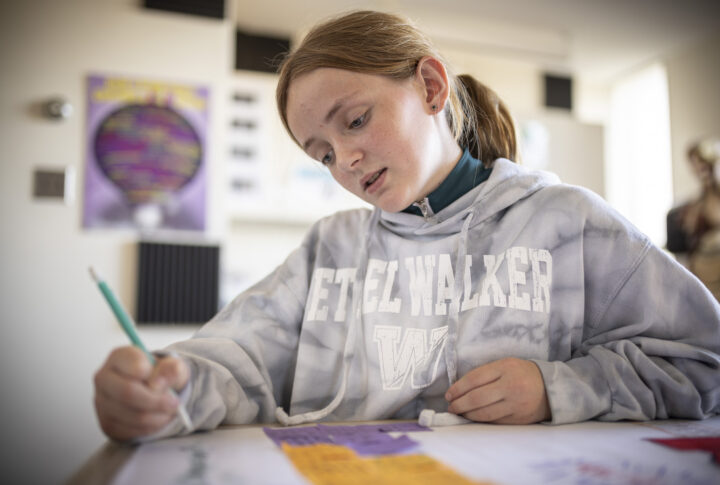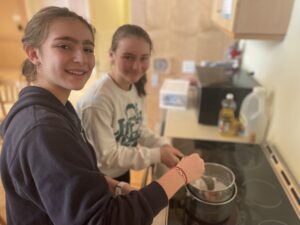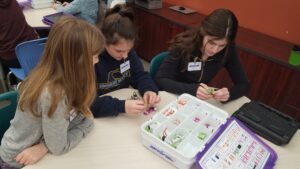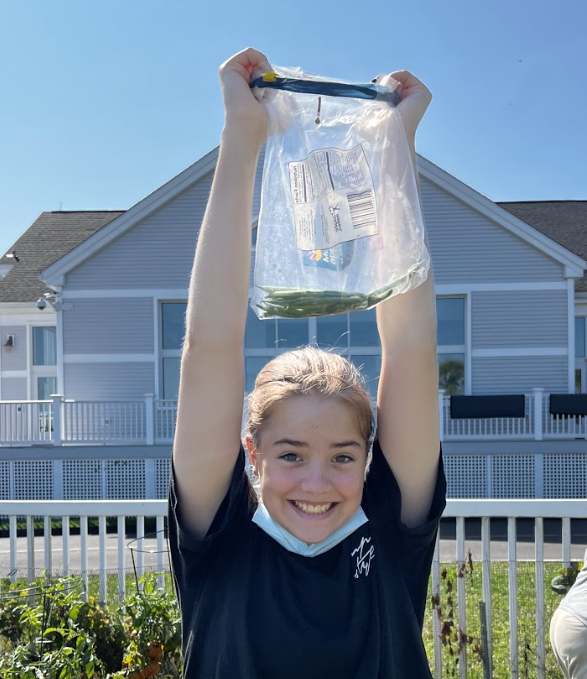
Girls thrive academically because our classrooms are intentionally designed to afford student agency and a platform where they develop their voices, while encouraged to take academic risks to further challenge and expand their intellectual capacity and curiosity.
Math, science, history, English, creative arts, and World Languages (Latin, Spanish, or French) are the core of the Walker’s Middle School curriculum. Hands-on learning is used extensively to build engagement and enhance skills. Alongside academics, our seminar and community partnerships programs are designed to further instill confidence and personal balance.
Explore the classes The Ethel Walker Middle School has to offer by clicking through offerings by grade level, or by taking a look through our more in-depth curriculum guide.
This retreat kicks off our school year! In partnership with Empower Leadership, students participate in carefully designed programming for girls to bond, learn about themselves, and bolster one another.
This retreat takes place at the start of the school year, a ritual that honors our 8th grade students as new leaders in their Middle School. Students learn to explore, take healthy risks, and support one another.
Designed by our faculty, this trip is thoughtfully planned to complement the 8th grade curriculum. This trip to our nation’s capital is a wonderful learning experience and another opportunity for our students to bond.
This program begins with a three-day conference in Vermont and works with our 7th grade students as they learn to become leaders within our school and the community. It concludes with a day of service with a nonprofit.
Lacuna (noun); a gap; an interval
Each winter, the entire Walker’s community engages in a series of unique and immersive classes during a school-wide Lacuna. Middle school students come together from across the grades to experience classes outside of the traditional classroom disciplines. Previous Middle School Lacuna class called Empanadas and Entrepreneurship: Designing a Latin American Food Truck, students studied cooking, multiculturalism, and business. The class culminated with an event where the girls market their empanadas to the community, calculate their profit and loss statements, and explore the origins of the dish through an examination of its history. Other students have taken the Lacuna class, “Storytelling for Social Justice” class, where they explored the power and voice of storytelling using poetry, essay, song, music, video, and the visual arts to tell their story about what moves and motivates them. At most schools, a gap in the schedule means a loss. At Walker’s, a lacuna —or gap —means a chance to dig deeper into new and relevant topics without the confines of a typical classroom experience.
Previous Middle School Lacuna class called Empanadas and Entrepreneurship: Designing a Latin American Food Truck, students studied cooking, multiculturalism, and business. The class culminated with an event where the girls market their empanadas to the community, calculate their profit and loss statements, and explore the origins of the dish through an examination of its history. Other students have taken the Lacuna class “Storytelling for Social Justice,” where they explored the power and voice of storytelling using poetry, essay, song, music, video, and the visual arts to tell their story about what moves and motivates them.
At most schools, a gap in the schedule means a loss. At Walker’s, a lacuna —or gap —means a chance to dig deeper into new and relevant topics without the confines of a typical classroom experience.


Our Community Partnerships program aims to develop students’ sense of empathy and explore what it means “to look beyond ourselves and recognize the needs of others,” a verse from our school meditation that guides us. In addition to providing service to the community, Walker’s Community Partnerships program allows our students to gain valuable skills while also serving others. Students begin participating in community partnership program in sixth grade and continue through the Upper School where they can create new partnerships based on their individual interests or serve as part of an established program.
Under the guidance of the Middle School Head of Community Partnerships, students participate in an array of activities including gardening and playing board games on the weekends at a local retirement community.
